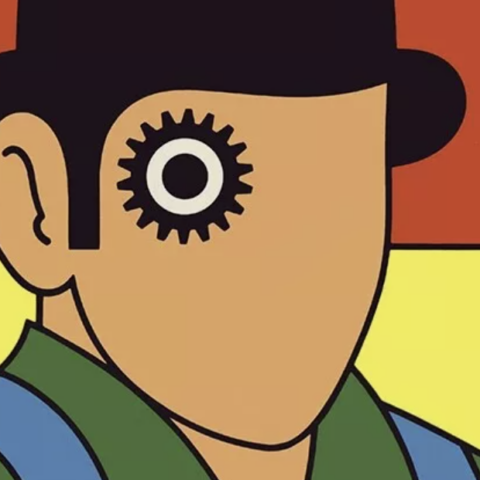Bright Lights, Brat Packs
By Audrey Annastasya
You might have heard of them. The Rat Pack. These were the infamously cool crew of actors and musicians in the 1960s, consisting of Frank Sinatra alongside Sammy Davis Jr., Dean Martin, Peter Lawford, and Joey Bishop. Then, 20 years later, in the 1980s, came the Brat Pack, a group of young and promising Hollywood actors who frequented the coolest and most exclusive clubs and bars in LA. At the same time as the boom of the Brat Pack, a group of American writers in the late 1980s were also grouped together as young precocious talents, despite them not being friends at all, not really. Yet, not one of these three groups had enjoyed being called these names that had rebellious connotations. So what was it about prestigious talent that made people want to label them together? Find out more here in Bright Lights, Brat Packs.
Initially, Sinatra had already been part of a friend group that had been named as the Rat Pack. This consisted of old Hollywood actors, such as Humphrey Bogart, Spencer Tracy, Judy Garland, David Niven, and Lauren Bacall. Then, when Bogart passed away due to cancer, the group fizzled out and eventually Sinatra met Davis and Martin in Vegas. The rest was history.
The Rat Packs starred in each other’s movies, performed together in hotels all around Las Vegas (most notably the Sahara), and gave the world the first and original Ocean’s 11 film.
Ocean’s 11 original film
Coined by journalist David Blum during an interview he conducted with Emilio Estevez, the Brat Packs were a group of Hollywood actors in the ‘80s that would often hang out and party together. The core members included Molly Ringwald, Rob Lowe, Emilio Estevez, Demi Moore, Judd Nelson, Anthony Michael Hall, Andrew McCarthy, Ally Sheedy, and Robert Downey Jr. The original Brat Packs garnered attention from everyone everywhere and even starred in each other’s movies.
Perhaps, there is something enticing about putting a group of people in boxes. It might be that because people couldn’t understand them, they labelled them immediately. Or it could also be a way of capturing and garnering readers’ interest.
Either way, critics and journalists felt that it was right to group together a bunch of new writers. They selected five writers under 30 that they felt had a significant similar trope among them: they were all young, successful, and published writers.
So, the literary brat packs were born; These well-dressed, hip, and educated writers were known for partying in all of the coolest and most exclusive bars and clubs of New York City, although, unlike the Hollywood Brat Pack, they did not do all these things together.
When the Literary Brat Packs came to be in the 1980s, New York City was temporarily coming back from the fiscal crisis in the 1970s; The city was going through its own resurrection and New York City had saved itself from near bankruptcy.
People felt there was hope again. Just like everywhere else, in the literary world, books started to be published left and right. Young writers, especially, were gaining extra exposure. All of a sudden, literary fiction was cool again.
In turn, journalists and critics selected a group of young writers, including Bret Easton Ellis, Jay McInerney, Jill Eisenstadt, Donna Tartt, and Tama Janowitz and named them the “Literary Brat Pack”.
American Psycho film from Bret Easton Ellis Book
In New York City in the 1980s, The Odeon was the spot for all the cool, young, and beautiful people of the city. This was where American Dad writer Tama Janowitz would come with her friend Andy Warhol. At The Odeon, Janowitz made sure to pay attention to all the gossip, insight, and stories.
Janowitz’s writing was considered controversial at the time, just like every other member of the group, she discussed sexual and gender politics in Manhattan in the 1980s. Janowitz’s works were reflective of the community that surrounded her. This was what made many of the works of the Literary Brat Pack so magnetic; their writing reflected their reality, though sometimes distorted or exaggerated.
All the way at Bennington College in Bennington, Vermont, 18-year-old Bret Easton Ellis was gaining attention for his journal entries. His creative writing teacher, Joe McGinnis, had even called up his editor friend at Simon & Schuster to rave about a young and new talent from LA. Ellis’ work was fresh, eccentric, and trippy; a movement glamorizing the life of LA and Hollywood kids doing drugs, partying, and spending their parents’ Hollywood money. To Ellis, this was his reality growing up in glamorous LA in the 80s.
Then, enter Jay McInerney, an Odeon regular, who had spent a much longer time in New York than Ellis and Janowitz, being in his later 20s in the early 1980s. McInerney’s Bright Lights, Big City was a hit. After his success, everyone around McInerney seemed to expect him to become the characters in his own book: taking a bunch of drugs in the basement bathroom of a dimly lit Manhattan restaurant. And he just never really embodied that.
Bright Lights, Big City film adapted from Bright Lights, Big City by Jay McInerney
Meanwhile, for Jill Eisenstadt, who shared a writing mentor with Ellis and had graduated from Bennington a year prior to him, the “Literary Brat Pack” were not as tight-knit as they seemed.
She only knew Ellis from their days in college. And she had only met McInerney a handful of times. The most reclusive and private member of the group, Donna Tartt, also only knew Ellis from her time at Bennington. Tartt’s writing is sophisticated and just like Ellis, her writing gained the attention of writing professors at Bennington the year she transferred from the University of Mississippi.
Journalists and critics during the time coined the group the “Literary Brat Packs”. In an essay published on LitHub, Eisenstadt writes that the grouping of these authors under the name “Literary Brat Packs” seemed like a call back to older writer groups from generations before them, such as the Bloomsbury group and Beat generation writers.
Maybe in order for these writers to gain attention, there had to be an attraction, and what is more attractive than a rebellious group of beautiful writers hanging around New York City?
In reality, though, McInerney and Ellis were only known as “book friends” or writers with similar thematic elements in both their writings. Meanwhile, in an interview with Harper’s Bazaar, Janowitz now feels as if she was brought into the mix only because she hung out in the same circles, had been a published writer before she turned 30, and was too cool for the dull, monotonous, and conservative group of writers that had predated their generation. Meanwhile, Eisenstadt and Tartt’s actual relation to the group was their time in Bennington, and with Ellis. None of them were ever really that close.
Generally, we love to group other people together because it is second nature to us as humans. We do it to famous folks all the time, especially with creatives in the public eye. Look at the different eras and genres of films and literature or the amount of writing circles that exist within the literary world specifically. People within those groups might not like it, but they are inevitable and may well have heightened the engagement of readers throughout the years.
Decades later, we can still see the impacts of the intensity of readers’ perceptiveness to the works of the Literary Brat Packs, which have redefined a generation of literary fiction. The literary brat packs lived their prime in an era when publishing was prestigious and exclusive, something many will never get to experience.
But, maybe that is the point: to experience the chaos through literature, though indirectly. Some would even say that these writers were provocateurs, but is that not what it means to be young? There is a sense of angst and frustration that comes with youth, but there is also that unreplicated lust for life, an aspect that is evident in the works of the Literary Brat Pack. And although some might have mellowed out, some certainly have not. At 58 years old, Ellis is still as powerful and dynamic in his writing as he was at 17.
Ellis came to the Southbank Centre in early February to do a reading of his new novel, The Shards, an autofiction novel published in 2023.
The Southbank’s literature and spoken word programme is brimming with today’s bestselling authors, award-winning poetry and spoken word, and dramatised readings of iconic novels from some of the world’s most inspiring writers. for example
The author Elizabeth Day celebrates the publication of her new book, Friendaholic: Confessions of a Friendship Addict, in conversation with close friend Phoebe Waller-Bridge on 26th march at 8pm. Or hear the best in UK poetry and music, with sets from poet Alycia Pirmohamed, Forward Prize winner Will Harris and TS Eliot Prize winner Sarah Howe with the event Out-Spoken 23rd February 745pm with plenty on offer for both adults and children across many topics the programme has much variety and is easily navigated here
Ellis read a piece from the new novel The Shards and then was in discussion before generously opening the floor to questions from the audience. The Shards a book he started after less than zero took another 3o odd year before the writer felt ready to revisit it.

A fictionalized memoir of Ellis’ final year in high school in 1981 in Los Angeles. Picking up in many ways where less than zero finished the book is a candy-coloured popcorn ride around the young and rich numbed 17-year-olds of LA as they enter the final year of the uber-privileged at a private high school. Full of youthful lustings, fantasies and ‘beautiful’ people
But an attractive and mysterious new boy Robert Mallory joins the class quite unexpectedly, which coincides with a serial killer nicknamed the Trawler who is gruesomely killing citywide twisting fear into this carefree city.
Pre mobile phones, the internet or other modern technologies there is an air to the book of nostalgia for polo shirts (candy colours and worn with collars up) home-coming queens, ray bans, easy drug use, easy sex, big-screen cinema, driving around in fancy cars on long open freeways, a time before political correctness and 24-hour connectedness. Every scene is set to the narrator’s personal playlist only helping bring the sun-tinged world alive until it all goes a little dark…
Even years after the craze of the Literary Brat Pack, Ellis’ writing remains as intensely young and gripping. He does not shy away from revisiting his youth. It also doesn’t shy away from lucid sexual encounters in a way many now would consider graphic, but it keeps lurid, fresh, and vital. Maybe he is able only to do this now as he nears 60 in order to see it from his own growth and distance.
Reading sessions at the Southbank Centre are held weekly. For more information visit their website here.
The Shards by Bret Easton Ellis is published by Swift Press
If you enjoyed reading Bright Lights, Brat Packs then why not try Plot Device.
.Cent Magazine London, Be inspired; Get involved



